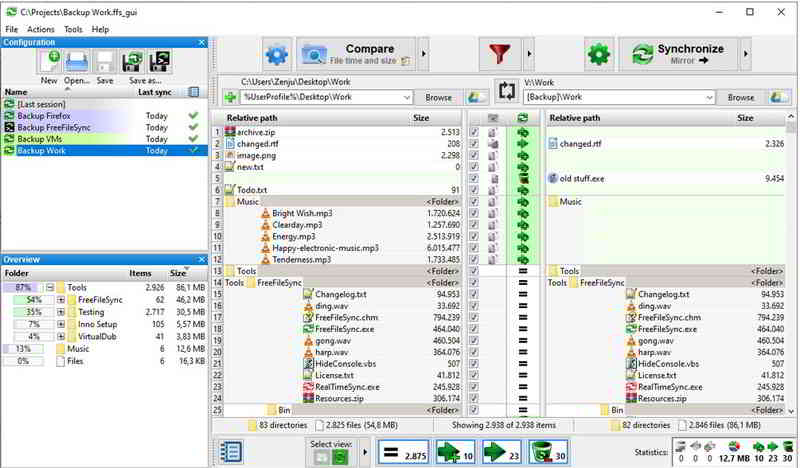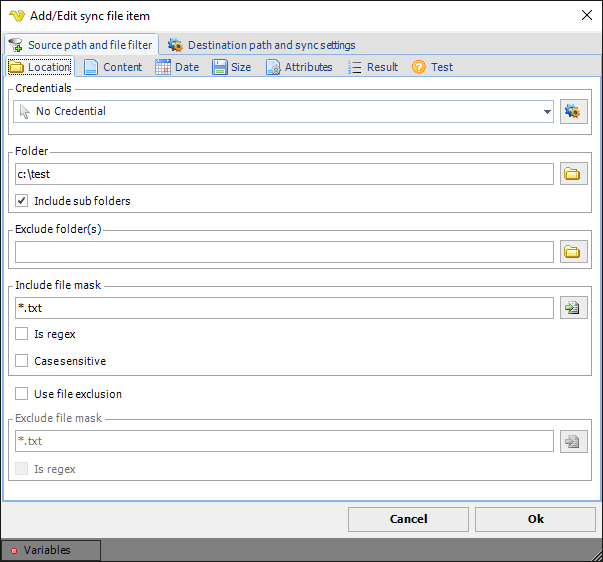

- #SYNCTHING FILE VERSIONING HOW TO#
- #SYNCTHING FILE VERSIONING INSTALL#
- #SYNCTHING FILE VERSIONING SOFTWARE#
You're not going to switch to Syncthing because it's so much easier.ġ. He then goes on to describe the definitely horrendous process of getting Dropbox going with the official client.īUT, then he goes on and explains the complex setup involved with Syncthing, which if it were explained screen by screen, like he did with Dropbox, would look even more tedious and complex. It’s ready to sync with any other Syncthing node, no other setup necessary. After you run that binary, you have a fully operational node of Syncthing. It’s so simple I thought I missed something.


I also love Nik Tonsky's writing but he's serious misrepresenting the ease of Syncthing in this post. I'll preface this by saying I switched from Dropbox to Syncthing a long time ago and I love Syncthing. They need to remove 95 percent of their garbage for the average user - the option to use the assisted living features should be available but not turned on by default. And then you realize this is 'standard practice' and finally understand how abhorrently terrible pretty much every damn website, app, and program on the planet is.ĭropbox is absolute garbage.
#SYNCTHING FILE VERSIONING SOFTWARE#
This is the software equivalent of getting a lawyer and a caretaker involved every damn time you put orange juice in the fridge - because it works for the disabled few corporations mistake 'accesibilty' for good design. What you might see is a caretaker sign documents for a terminally disabled patient who need assisted living services and then put orange juice in the fridge.which is where the mistake comes from.
#SYNCTHING FILE VERSIONING INSTALL#
If you had to run an install wizard, use a key, and upload a photograph of yourself everytime you wanted to, say, put orange juice in the fridge, your average user would scream bloody murder and rightly call your product bloody garbage. I think these 'best practices' are really just the software equivalent of legalese speak. This isn't a syncthing problem as such, it's a problem of trying to use a file syncing application on the internal state of an application on two different machines with two different states, and expecting the result to be a valid state.
#SYNCTHING FILE VERSIONING HOW TO#
git directory entering a state in which git doesn't know how to interpret it. Depending on how such a problem might manifest in real life as a result of performing a file-based sync on two instances of a git directory, this could lead to your. By syncing changed files, any filesync utility would break this invariant by resulting in `.git/activebranch/` containing two files, due to each side seeing a new file that the other side needs to acquire. git internals require that at any given time, `.git/activebranch/` must contain exactly one file whose filename is the name of the active branch, and git maintains this invariant. But any files that are changed in one and not in the other end up getting sync'ed over into the other, including inside your GIT directory, which will very likely lead to an illegal GIT directory state.Īs a toy example, pretend that the. Some files conflict, which is likely reasonably handled as any filesync application needs to handle conflicting updates. git directory.Īs an example problem-case, say your first device checks out branch A and your second device checks out branch B. This also applies to the bizarre complaint about cloud storage space limits - of course you need storage space on the service if those files have to live elsewhere!ĭoing a quick search of reported issues around git repos, basically the trouble is that a git repo folder does not expect to be sync'ed at a file level, because repos are expected to be in different states on different devices, and the state of a repo is represented in the filesystem via the. Remove those warnings and see how many normies complain to Apple/Dropbox that they didn't know removing a file from their synced folder meant it wouldn't be synced anymore. That isn't those platforms begging for attention (?).

Those warnings are super clear to people who use those services for backup - remove this file and it won't be backed up, hence not available elsewhere. The author's baffling reaction to iCloud and Dropbox's warning just makes my point. I couldn't go to a less tech savvy friend and say, "Oh, you use Dropbox for backups? Here, use syncthing instead!" For one, most people don't have multiple computers they want to keep in sync, and even if they do it's unlikely that those multiple computers have overlapping periods of being online, which syncthing will need to keep back ups! I love syncthing as much as the next guy on here, but this article feels very much like "why doesn't this square peg fit my round hole?!" Dropbox (and iCloud) are meant more for cloud file storage than pure device-to-device synce.


 0 kommentar(er)
0 kommentar(er)
